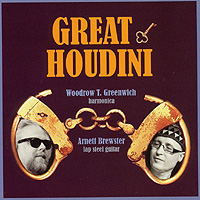 The
affinity and admiration that guitarist Bruce Arnold has for
the blues emerges fully formed—albeit in its rawest and most
direct form—on the 2011 CD release of Great Houdini.
Released by the NYC based Muse-Eek Records, Great Houdini is
actually a recording collaboration between Bruce Arnold and his blues
brother in arms, harmonica player Dave Schroeder. As if to
revel in their innermost musical guises, on Great Houdini Bruce
and Dave take on the pseudonyms Arnett Brewster (Bruce Arnold)
and Woodrow T. Greenwich (Dave Schroeder). Inspired by
the late, great escape artist and magician Harry Houdini, on Great
Houdini both Brewster and Greenwich throw off the shackles of
their own well informed musical virtuosity and get back to basics
for some good old time blues instrumental duets—here pairing
Brewster’s lap slide guitar with Woodrow’s harmonica. Although
both musicians are renowned among their peers in the world of jazz
fusion as well as both traditional jazz and contemporary classical
music theory, the ease with which they delve into the art of fundamental
American blues based instrumental music is quite refreshing and revealing
at the same time. With its nostalgic musical vibe evoking images the
old West and Midwest, the loneliness of Route 66, American ghost towns
and basically all things the blues, Great Houdini is quite
a perfect way for music aficianados to re-explore the primitive, foundational
concepts of the art of American blues music. While Bruce Arnold claimed
in his 2010 interview
with mwe3.com that his 2010 album Art Of The Blues was,
in his words, ‘really the closest thing I’ve come to a traditional
jazz sound,’ his 2011 Great Houdini album with Dave Schroeder
clearly details Bruce’s major commitment to the purity
of the blues. Liner notes here by Howard Mandel shines a light
on the creation of this significant CD. On Great Houdini, Bruce
Arnold and Dave Schroeder bring perhaps the greatest American musical
art form back to the beginning again. www.Muse-Eek.com
The
affinity and admiration that guitarist Bruce Arnold has for
the blues emerges fully formed—albeit in its rawest and most
direct form—on the 2011 CD release of Great Houdini.
Released by the NYC based Muse-Eek Records, Great Houdini is
actually a recording collaboration between Bruce Arnold and his blues
brother in arms, harmonica player Dave Schroeder. As if to
revel in their innermost musical guises, on Great Houdini Bruce
and Dave take on the pseudonyms Arnett Brewster (Bruce Arnold)
and Woodrow T. Greenwich (Dave Schroeder). Inspired by
the late, great escape artist and magician Harry Houdini, on Great
Houdini both Brewster and Greenwich throw off the shackles of
their own well informed musical virtuosity and get back to basics
for some good old time blues instrumental duets—here pairing
Brewster’s lap slide guitar with Woodrow’s harmonica. Although
both musicians are renowned among their peers in the world of jazz
fusion as well as both traditional jazz and contemporary classical
music theory, the ease with which they delve into the art of fundamental
American blues based instrumental music is quite refreshing and revealing
at the same time. With its nostalgic musical vibe evoking images the
old West and Midwest, the loneliness of Route 66, American ghost towns
and basically all things the blues, Great Houdini is quite
a perfect way for music aficianados to re-explore the primitive, foundational
concepts of the art of American blues music. While Bruce Arnold claimed
in his 2010 interview
with mwe3.com that his 2010 album Art Of The Blues was,
in his words, ‘really the closest thing I’ve come to a traditional
jazz sound,’ his 2011 Great Houdini album with Dave Schroeder
clearly details Bruce’s major commitment to the purity
of the blues. Liner notes here by Howard Mandel shines a light
on the creation of this significant CD. On Great Houdini, Bruce
Arnold and Dave Schroeder bring perhaps the greatest American musical
art form back to the beginning again. www.Muse-Eek.com
mwe3.com presents an interview with
BRUCE ARNOLD
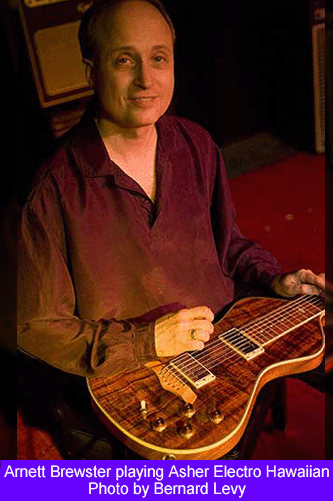 mwe3: You
spoke about finishing this album last year after the release of Heavy
Mental and The Art Of The Blues. Is Great Houdini
a natural progression for you following the release of those CD releases?
mwe3: You
spoke about finishing this album last year after the release of Heavy
Mental and The Art Of The Blues. Is Great Houdini
a natural progression for you following the release of those CD releases?
BRUCE ARNOLD: I’m always looking for a new means of expression.
That’s why I’m into the lap slide guitar and also the computer
program SuperCollider. I’m also currently working on my follow-up
CD to Heavy Mental using a Music Man double neck with 12 and
6 string necks. Each instrument gives a different sound that inspires
me. For instance I have two wonderful slide guitars. The Asher Electro
Hawaiian gives a smooth lush sound and rips like crazy when you put
distortion or wahwah on it. I’m working on a big band project
with arranger/composer Rich Shemaria using the Asher and it’s
really sounding great. In addition, I have a Rayco Resophonics Weissenborn
Lap Slide build by the Canadian luthier Mark Thibeault. It's a gorgeous
acoustic guitar, and I’m playing that in another blues-based
project with singer Michal Shapiro. The lineup is still Woodrow T.
Greenwich on blues harp, Kirk Driscoll on frottoir and Jerry DeVore
on acoustic bass. It’s got that country blues vibe but the songs
give it a more modern sensibility. I’m also going to be recording
an "electronic music meets Rayco acoustic slide" project
using composer Tom Hamilton’s “Off-Hour Wait State (Some
Music about the Subway)” which I’m quite excited about.
It’s going to be a real interesting blend of electronic music
and acoustic blues slide sound. I guess all these projects are not
occurring in a particularly linear progression but I seem to get urges
in these sonic directions and I just go with them.
mwe3: You and Dave Schroeder are respected teachers in the music department
at NYU. I heard there was some interest in how you and Dave went back
to the basics on Great Houdini and some at the school were
even slightly shocked by your return to basics on this album.
BA: Well I’d have to say that Woodrow T. Greenwich (Dave) was
a big influence on this. One day he said “do you play slide?”
and I had recently received a “Powerslide” from Peavey Electronics.
It's a very inexpensive guitar, but I really enjoyed playing it and
it brought back a lot of my early blues experiences. I started rehearsing
every week with Woodrow and we learned a lot about picking up a new
instrument, plus we really liked playing together. The NYU faculty
reads like the Who’s Who of New York Jazz so we had great jazz
artists sticking their head into his office as we were rehearsing
with looks from puzzled to pleased on their faces. Honestly some jazz
musicians can be pretty narrow-minded, but most at NYU are very progressive
so they dug what we were doing. Of course they all had to make some
funny comment to keep up the camaraderie, but for instance you have
players like Billy Drewes who plays with the Vangaurd Orchestra but
also does a lot of work with Bill Frisell, and he's all over the map
with his music. He played with us one night and we all had a lot of
fun.
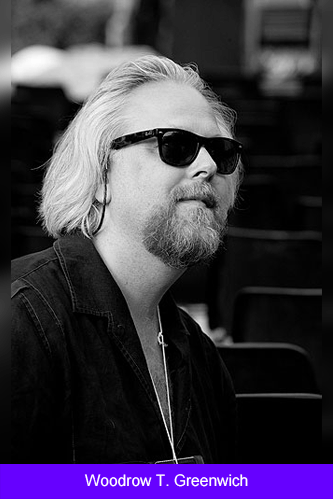 mwe3: How
does the Great Houdini album reflect your love of the blues
and how does the album reflect your childhood and other musical experiences
growing up in the heartland of America?
mwe3: How
does the Great Houdini album reflect your love of the blues
and how does the album reflect your childhood and other musical experiences
growing up in the heartland of America?
BA: I was very influenced by my cousin Dave “Harry” Woods.
Really an unbelievable blues guitarist who turned me on to a lot of
great blues music starting when I was around 8 years old. I also had
a dear friend Dan Phen whose record collection pretty much covered
the entire spectrum so hearing all those sounds really influenced
me during high school. And of course there is the popularity of country
music in the Dakotas so the sound of pedal steel was never too far
out of ear shot. Sioux Falls, South Dakota at that time actually had
some amazing musicians playing around at the time. You had Mike Miller,
an L.A. session guitarist now, that has played with just about anybody
you can think of. And the late Mark Craney, was there; he was an LA
drummer who had a long list of contemporary rock groups he played
with after leaving South Dakota. That is only a few of the better
known players but I could go on with a long list of guys that were
great players, so the bar was high and there was a very active music
scene. Really I think the thing that was happening as blues and rock
sensibilities met in the ‘60s was very much alive in Sioux Falls
as I’m sure it was throughout the mid-west...it’s just that
we had this crop of unbelievable musicians. By the time I was in high
school they had moved to John McLaughlin's Birds Of Fire which
isn’t exactly easy music. This might also explain my eclectic
nature. It was very common to see rock, blues and jazz combined in
various ways at that time back home.
mwe3: Where and when was the album recorded and finished? How long
have you known Dave Schroeder and how would you compare your music
with Dave’s compositions on the Great Houdini CD?
BA: I have a studio in Westbeth (HUD artist residence building) in
the West Village that I share with jazz drummer Tony Moreno who is
on my Art Of The Blues CD. We did 3 or 4 sessions of just playing
live together and then went back and patched up some of the drafty
holes. This was recorded between August of 2010 and the tracking was
done around Christmas. We then spent a few month mixing and CD production
took a while too.
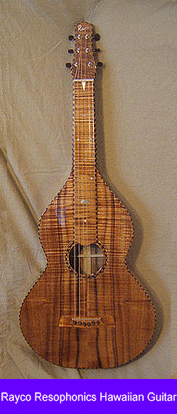 I think Woodrow
T’s (Dave) and my style of writing for this project were pretty
different. Dave is a very lyrical composer so I find his melodies
to be very memorable. I based many of the forms of my compositions
on a James Cotton CD he did with jazz bassist Charlie Haden. I also
sneaked a lot of my serial composition ideas into my stuff. All the
compositions except “Widow Maker” have a strong background
of “025” which is using a three note cell that would have
the interval content of a whole step and a fourth. Which of course
is one of the major building blocks of a pentatonic scale which is
so important to blues and early rock. So most people wouldn’t
even notice this but it’s there. There
is an analysis of one of the compositions on my blog here.
I think Woodrow
T’s (Dave) and my style of writing for this project were pretty
different. Dave is a very lyrical composer so I find his melodies
to be very memorable. I based many of the forms of my compositions
on a James Cotton CD he did with jazz bassist Charlie Haden. I also
sneaked a lot of my serial composition ideas into my stuff. All the
compositions except “Widow Maker” have a strong background
of “025” which is using a three note cell that would have
the interval content of a whole step and a fourth. Which of course
is one of the major building blocks of a pentatonic scale which is
so important to blues and early rock. So most people wouldn’t
even notice this but it’s there. There
is an analysis of one of the compositions on my blog here.
I have known Woodrow for almost 30 years. He has been a great friend
to me and got me involved at NYU almost as soon as I moved to NYC
from Boston. Being part of the jazz studies department has been a
great honor for me, rubbing elbows with the likes of John Scofield
and Joey Lovano and lots of others...it’s been a great environment.
Dave is the director of the department and is always bringing these
musicians together for performances at various venues like the Blue
Note with and without student involvement, so it’s been a great
experience that’s hard to match in the NYC scene.
mwe3: How did you get introduced to the Asher Electro Hawaiian lap
slide guitar and how would you compare your guitar sound and technique
on lap slide with your performance and mindset on your other guitars?
BA: I heard Ben Harper playing it on a PBS concert and it completely
blew me away. Bill Asher builds some of the most sonically unique
sounding guitars. There’s a woodiness, a sweaty, earthy quality
to them that is really something. As far as my lap slide performance
I’d say I’m still just getting the basics together of good
intonation.
And developing my ability with the slide and finger picks is totally
kicking my ass. I use a standard guitar tuning which makes the guitar
a lot harder to play but being involved in a jazz scene, I’m
always asked to read music and just don’t have the time to figure
out how to read on an instrument with a different tuning. Using the
standard guitar tuning requires that I bend the bar many times to
get certain chord voicings. Not an easy thing to do but I’m slowly
getting better at it. I use old Fender amps. On the Great Houdini
CD I played through a vintage Fender ‘59 Bassman. I also use
a bunch of different early vintages of pre-reverb Fender Deluxes.
These amps have an incredibly warm sound. The Great Houdini
CD doesn’t have any effects except a little reverb but I often
use effects when playing with other groups. There is usually a Klon
Centaur for distortion, Fulltone Clyde WahWah and of course a healthy
dose of SuperCollider processing.
mwe3: The Hawaiian slide guitar has quite a history in American music
lore. Are you also a history buff when it comes to the Hawaiian slide
guitar?
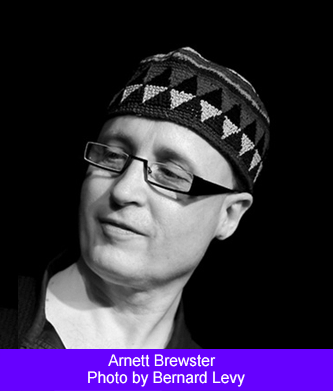 BA: No not
at all. Really I had no idea of particular types of slide guitars
until I started to research them with the idea of buying one. Both
the Asher and the Rayco are “Weissenborn” type guitars.
Hermann Weissenborn built guitars in the 1920’s. and most great
Hawaiian guitar players used his guitars. As mentioned I heard Ben
Harper using one and then did a few searches on the internet and was
completely blown away by their sound. One distinct feature of their
design is they have hollow necks so they have this incredible resonance
that makes the hair on the back of your neck stand up. It's a really
special sound that makes it hard to put the guitar down once you start
playing it. I haven’t really been influenced playing wise by
any slide players I’m just playing the stuff that’s in my
head which is a combination of old blues stuff and my modern pitch
class set approach to music. I think as my ability gets better you
will see more of the modern stuff coming out.
BA: No not
at all. Really I had no idea of particular types of slide guitars
until I started to research them with the idea of buying one. Both
the Asher and the Rayco are “Weissenborn” type guitars.
Hermann Weissenborn built guitars in the 1920’s. and most great
Hawaiian guitar players used his guitars. As mentioned I heard Ben
Harper using one and then did a few searches on the internet and was
completely blown away by their sound. One distinct feature of their
design is they have hollow necks so they have this incredible resonance
that makes the hair on the back of your neck stand up. It's a really
special sound that makes it hard to put the guitar down once you start
playing it. I haven’t really been influenced playing wise by
any slide players I’m just playing the stuff that’s in my
head which is a combination of old blues stuff and my modern pitch
class set approach to music. I think as my ability gets better you
will see more of the modern stuff coming out.
mwe3: Why do you and Dave call the album Great Houdini and
how would you say it shines a light on your love of American blues
music?
BA: Harry Houdini was known for escaping from all kinds of boxes and
restrictions and we don’t like to be boxed in musically, either
by instrument or by style so it seemed like a natural fit. He was
also from the midwest (Wisconsin don’t cha know) and although
a generation or two before my time if you read his bio his early upbringing
really resonates with both Woodrow (from Carroll, Iowa ya betcha)
and my experiences from South Dakota. Both of our music experiences
from this time profoundly shaped our later sensibilities so we felt
a kinship with Mr. Weisz aka Houdini.
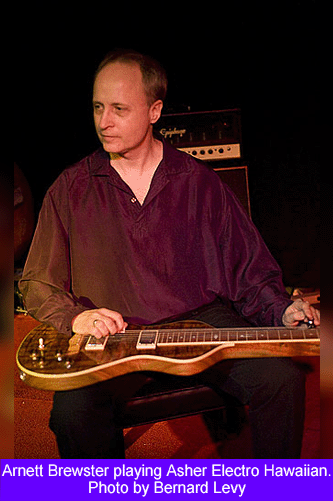 mwe3: What
are you next plans musically, guitar wise and in your recording and
teaching career too?
mwe3: What
are you next plans musically, guitar wise and in your recording and
teaching career too?
BA: Like I said, I'm currently working on a new rock CD, using a Music
Man double neck and it's turning out quite commercial. Again using
the pitch class set “025” so the compositions and the soloing
are much more “inside” than my previous CDs. Been writing
new music for my next jazz CD, starting a new project with the great
drummer Ed Uribe working on recording jazz standards from the Great
American Songbook with of course generous injections of my pitch class
set improvisation ideas. Trying to get back to a duet recording I
did with fellow “Spooky Actions” partner John Gunther. We
are working on a duet version of Bela Bartok's Romanian Dances where
I play classical guitar so that is really stretching my ability. Also
working on some new sounds for Supercollider thinking about doing
a much more electronic project in the near future. Teaching wise,
I’m about to start the NYU Summer Guitar Intensive that runs
every year for 3 weeks in July. We have a new performance space, the
“Provincetown Playhouse” on MacDougal Street in the Village
so very much looking forward to that.
I also just started giving online lessons with Truefire.com which
has developed an incredible interface for interacting with students.
I will be going out to the Jazz School in Berkeley California in August
to teach and perform with Mimi Fox. Looking forward to getting away
from the New York heat.
I also have a new educational DVD out called Guitar Physiology
Survival Guide: 33 Best Practices for Building Speed, Strength and
Agility. I’m very excited about this release. I’ve wanted
to get a DVD out that really looks closely at the nuts and bolts of
the physical act of playing the guitar. I have found that inattention
to these most basic details is the reason guitarists don’t reach
their full potential. The DVD contains a lot of important information
to prevent folks from getting repetitive stress injuries, tendonitis,
etc. from playing the guitar, something that is way more common than
most people realize. And
the techniques I describe can also help folks that have already messed
themselves up, to play more fluidly and painlessly.
Thanks
to Bruce Arnold @ www.muse-eek.com



